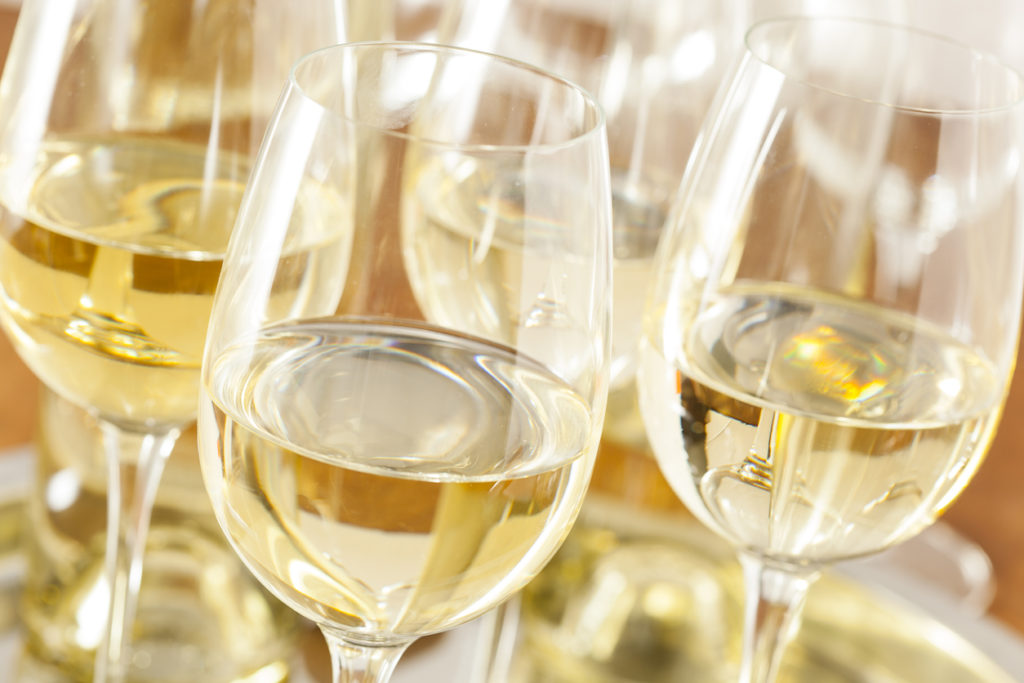When it comes to white wines, Viognier and Chardonnay are two prominent contenders that have been captivating wine enthusiasts for decades. Both varietals boast distinct flavors and characteristics, making them popular choices for wine aficionados seeking a delightful sensory experience. Viognier, with its aromas of peach, apricot, and floral notes, offers a unique taste profile that sets it apart from other whites.
On the other hand, Chardonnay’s versatility and ability to express different styles ranging from buttery and oaky to crisp and citrusy has earned it a special place in the hearts of wine lovers worldwide. As we delve into the intricate world of Viognier vs Chardonnay, we will explore their origins, flavor profiles, food pairings, and ultimately decide which one reigns supreme in the realm of white wines.

Understanding Viognier
Viognier, the elegant and aromatic white wine grape, has been captivating wine enthusiasts around the world with its distinct characteristics. Originating from the Rhône Valley in France, Viognier is known for its complex bouquet of aromas that can range from floral notes such as honeysuckle and jasmine to fruity scents like apricot and peach. This unique combination of fragrances makes Viognier an irresistible choice for those seeking a sensory adventure. Similar to Syrah Viognier is a warmer climate grape.

What sets Viognier apart from other white wines is its full-bodied nature and rich texture. It offers a luscious mouthfeel that coats the palate with flavors of ripe stone fruits, tropical fruits, and even hints of spices. The well-balanced acidity adds a refreshing touch to this complex wine, making it both enjoyable on its own or as a versatile companion to various cuisines.

One advantage that Viognier brings to the table is its ability to age gracefully. While it can be enjoyed young with all its vibrant fruitiness intact, aging allows it to develop more nuanced flavors reminiscent of dried fruits and honeyed undertones. Whether you are savoring a bottle immediately or cellaring it for later enjoyment, Viognier promises an evolving experience that rewards patience and exploration alike.
Understanding Chardonnay
Chardonnay, often referred to as the queen of white wines, is a versatile grape variety that has captured the hearts and palates of wine enthusiasts around the world. This green-skinned grape originated in Burgundy, France and is now cultivated in various parts of the globe, including California, Australia, and New Zealand. One of Chardonnay’s unique qualities lies in its ability to beautifully reflect terroir, showcasing distinct characteristics depending on where it is grown and how it is vinified.

The flavor profile of Chardonnay can vary widely based on winemaking practices. When aged in oak barrels, it can exhibit buttery notes with hints of vanilla and caramel. On the other hand, when fermented solely in stainless steel tanks or concrete eggs, Chardonnay showcases vibrant fruit flavors. You can find aroma of lemon zest, green apple, and tropical fruits. It’s intriguing to see how winemakers play with these variables to create different expressions of Chardonnay that pair effortlessly with a wide range of dishes.

While Chardonnays have faced criticism for being overly oaky or lacking acidity at times, there has been a renewed focus on producing fresher styles. They highlight purity of fruit and minerality over heavy oak influence. From lean and crisp examples to rich and creamy ones – there truly is a Chardonnay for every occasion and taste preference.
Similarities of Viognier and Chardonnay
Both Chardonnay and Viognier are white wines that have gained widespread popularity among wine enthusiasts. While they may have distinct characteristics, there are also several similarities that make them worth exploring side by side. One notable similarity is the richness and complexity of flavors that these wines offer. Both Chardonnay and Viognier can exhibit a wide range of aromas, such as tropical fruits, stone fruits, citrus, and floral notes. This versatility means they can be paired with a variety of foods or enjoyed on their own.

Ageing Potential
Another similarity lies in their potential for aging. Chardonnay produced in cool climates has the ability to age gracefully for years due to its high acidity and structure. Similarly, Viognier wines crafted from low-yielding vineyards with optimal maturity can develop intriguing characteristics over time. This aging potential allows both Chardonnay and Viognier enthusiasts to explore the evolution of flavors as the wines mature.

Oak Ageing
Moreover, both varieties benefit from oak aging. The use of oak barrels adds complexity and depth to these wines by imparting flavors like vanilla, spice, or toastiness. It is important to note that while some Chardonnays showcase pronounced oak influence with buttery textures, others maintain a more delicate balance between fruitiness and oak integration. This can be found with some Viogniers, too.
Differences between Viognier and Chardonnay
When it comes to white wines, Chardonnay and Viognier are two popular options with distinct characteristics.

Aroma
Chardonnay is often described as versatile, with a wide range of flavors depending on factors like oak aging and region. It can have notes of butter, vanilla, and tropical fruits. Viognier, on the other hand, is known for its intense aromas of apricot, peach, and honeysuckle. This grape varietal produces full-bodied wines with a viscous texture.

Acidity
One key difference between the two wines lies in their acidity levels. Chardonnay tends to have higher acidity compared to Viognier. This higher acidity provides structure and crispness to Chardonnay wines, making them refreshing and food-friendly. In contrast, Viognier has lower acidity, resulting in a smoother mouthfeel that coats your palate.

Ageing Potential
Another noteworthy distinction is their aging potential. While both wines can be enjoyed young or aged slightly, Chardonnays generally have more aging potential due to their higher level of natural acidity and tannins from oak aging. Over time, these qualities contribute to complex flavors and an overall evolution in the wine’s profile.
Food Pairing of Chardonnay and Viognier
Chardonnay and Viognier are both popular white wines known for their distinct characteristics. How they pair with a variety of foods makes them truly impressive.

Chicken and Spicy foods
Chardonnay, with its rich flavor profile and creamy texture, complements dishes like roasted chicken or seafood beautifully. The buttery notes in the wine add depth to these dishes while cutting through any richness.
On the other hand, Viognier’s fruity aromas, such as peach and apricot, make it an ideal choice for pairing with spicy foods. The natural sweetness in Viognier can help balance out the heat in dishes like Thai curry or Indian vindaloo. Its medium-bodied nature allows it to stand up to bold flavors without overpowering them.

Grilled Vegetables and Sushi
For a unique twist on food pairing, try matching Chardonnay with grilled vegetables. The wine’s subtle oak undertones enhance the smokiness of grilled vegetables while still allowing their natural flavors to shine. And if you’re feeling adventurous, pair Viognier with sushi. The lightness of this white wine complements the delicate flavors of fresh fish while its acidity brightens up soy-based sauces.

How to serve Chardonnay and Viognier
When it comes to serving Chardonnay and Viognier wines, there are a few key considerations that can elevate the experience for both you and your guests.
Temperature
Firstly, temperature is crucial. Chardonnay should be served chilled. Don`t serve it too cold; around 50-55°F is ideal to allow the subtle flavors and aromas to shine. On the other hand, Viognier benefits from being slightly warmer. Serve it around 55-60°F, as it allows its more delicate floral notes to develop.

Wine Glasses
Another important aspect of serving these wines is glassware. Opting for a medium-sized white wine glass with a tulip-shaped bowl will help capture the nose and enhance the aroma of each wine. This shape also helps to focus the flavors on your palate while allowing enough surface area for proper aeration. It’s worth mentioning that avoiding overly chilled glasses or those with thick rims can greatly improve tasting experiences for both varietals.

Conclusion
In conclusion, Chardonnay and Viognier wines share many similarities that make them both worthy of exploration by wine enthusiasts. Both varietals offer a wide range of flavors and aromas, from fruity and floral to creamy and buttery. They also both benefit from oak aging, which adds complexity and depth to the wines. Additionally, Chardonnay and Viognier are versatile when it comes to food pairing, making them suitable for a variety of dishes. Whether you prefer the crispness of Chardonnay or the opulence of Viognier, there is no doubt that these two wines have much in common. So why not grab a bottle of each and embark on a delightful tasting journey?

